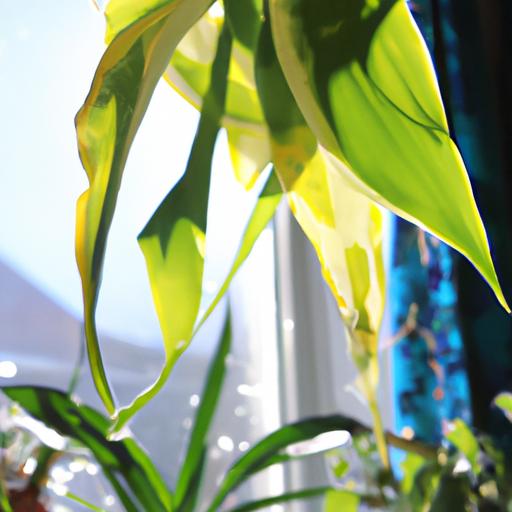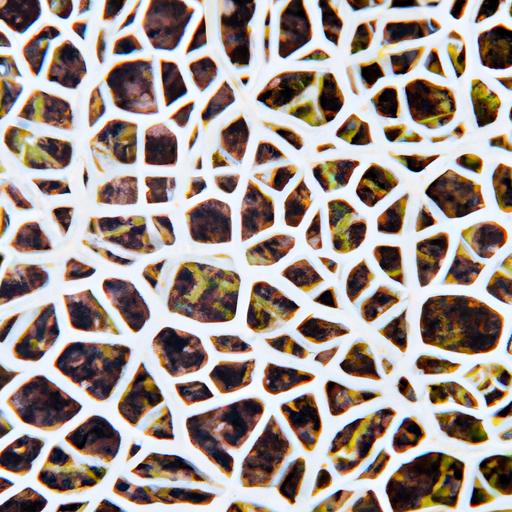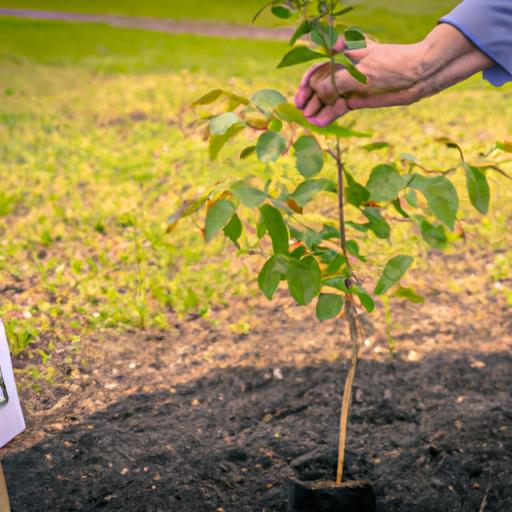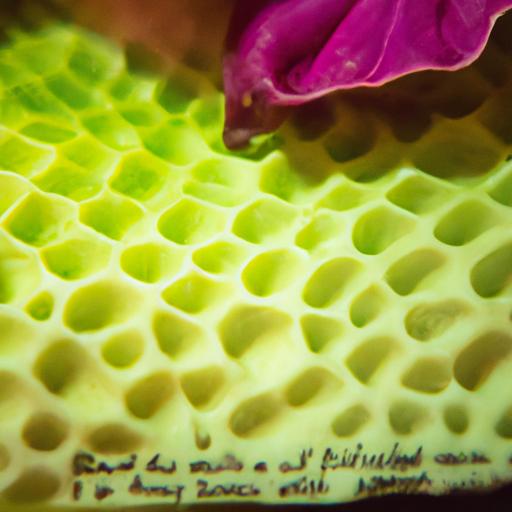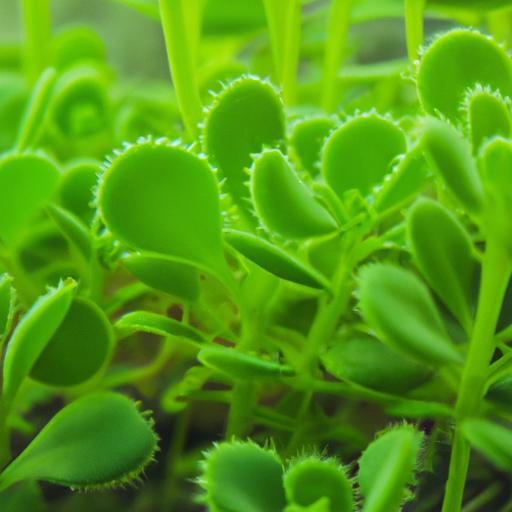Can Plants Grow Without Sunlight?
Plants, the green wonders of nature, have always been associated with sunlight. We know sunlight plays a crucial role in their growth and development. But have you ever wondered if plants can survive and thrive without sunlight? In this article, we will delve into the importance of sunlight for plant growth and explore the possibility of plants growing without this essential element.
Importance of Sunlight for Plant Growth
Sunlight is the lifeblood of plants. Through a process called photosynthesis, plants convert sunlight into energy, enabling them to carry out essential functions for growth and survival. During photosynthesis, plants absorb sunlight through their leaves and use it to convert carbon dioxide and water into glucose and oxygen. This glucose serves as the building blocks for plant tissues, while the oxygen is released into the atmosphere, benefiting all living organisms.
Without sunlight, plants would lack the necessary energy to produce food, grow, and reproduce. Sunlight is not only a source of energy but also a catalyst for the production of chlorophyll, the pigment responsible for the green color in plants. Chlorophyll captures sunlight and plays a pivotal role in converting it into usable energy. In essence, sunlight is the driving force behind the vibrant green hues we see in our gardens and forests.
Exploring the Possibility of Plants Growing Without Sunlight
While sunlight is undeniably vital for most plants, there are intriguing exceptions that challenge this notion. Certain plants have adapted to survive in low-light conditions, such as shaded areas or even completely sunless environments. These unique plants have found alternative ways to obtain the energy they need for growth and sustenance.
Stay tuned as we unravel the mysteries of plant growth without sunlight. In the following sections, we will explore the role of artificial light and natural light alternatives, discuss plants that thrive in sunless habitats, and examine the crucial factors that influence plant growth in the absence of sunlight. So, let’s embark on this enlightening journey together and discover the fascinating world of plants that defy the odds.
Alternative Sources of Light for Plant Growth
Plants are remarkably adaptive organisms, and they can thrive under different light conditions. When sunlight is scarce or unavailable, alternative sources of light become crucial for sustaining plant growth. Let’s explore two primary alternatives: artificial light and natural light alternatives.
A. Artificial Light: An Effective Substitute for Sunlight
Artificial light has proven to be a game-changer for indoor gardening and areas with limited access to sunlight. By providing a controlled light source, we can mimic the effects of sunlight and ensure plants receive the necessary light energy for photosynthesis.
1. Types of Artificial Light Suitable for Plant Growth
Not all artificial lights are created equal when it comes to supporting plant growth. Some popular options include fluorescent lights, LED lights, and high-intensity discharge (HID) lights. Each type has its own advantages and considerations, such as energy efficiency, light intensity, and cost-effectiveness. Choosing the right artificial light for your plants is crucial to promote optimal growth and prevent any potential deficiencies.
2. Recommended Light Spectrum for Optimal Growth
Plants require specific light wavelengths for different stages of growth. For instance, blue light promotes leaf development and compact growth, while red light stimulates flowering and fruiting. Tailoring the light spectrum to match the plant’s needs can significantly enhance its growth and overall health. Many artificial lights are designed with adjustable spectrums, allowing you to customize the lighting conditions based on the plants’ requirements.
B. Natural Light Alternatives
While artificial light is a reliable option, natural light alternatives can also be considered for plant growth, especially in outdoor or partially shaded areas.
1. Indirect Sunlight: Harnessing Light Through Reflection
Indirect sunlight refers to the light that is not directly exposed to plants but is reflected off surfaces such as walls, buildings, or nearby objects. This reflected light can still provide a considerable amount of energy for plant photosynthesis. By strategically positioning plants to capture indirect sunlight, you can optimize their growth even in areas with limited direct sunlight.
2. Shade-Tolerant Plant Varieties
Nature has its own way of adapting to different light conditions, and certain plant species have evolved to thrive in shaded environments. These shade-tolerant plants have adapted mechanisms to maximize the efficiency of the limited light available. By selecting shade-tolerant plant varieties, you can cultivate a thriving garden even in areas with minimal direct sunlight.
In the next section, we will explore fascinating plants that can grow without direct sunlight and uncover their unique adaptations. Let’s dive deeper into the world of plants that defy conventional expectations and illuminate our understanding of their growth requirements.
Exploring Plants That Can Grow Without Sunlight
As we delve deeper into the realm of plant growth without sunlight, we encounter a fascinating array of flora that have adapted to thrive in sunless environments. These remarkable plants have devised ingenious strategies to obtain the necessary nutrients and energy for survival, even in the absence of direct sunlight. Let’s explore some of these extraordinary plant species:
A. Epiphytic Plants: Thriving Without Soil and Direct Sunlight
Epiphytic plants, also known as air plants, are masterful survivors that cling to other plants or structures without relying on soil for nutrients. These unique plants have evolved to absorb moisture and nutrients from the air and rainwater, as well as from decaying organic matter that accumulates around them. Epiphytes can be found in tropical rainforests, where they grow on tree trunks, branches, or rocks, often in shaded or partially shaded areas. Examples of epiphytic plants include orchids, bromeliads, and ferns, which have adapted to thrive in the canopies of dense forests.
B. Cave-Dwelling Plants: Adapting to Low Light Environments
Caves, with their complete darkness and limited access to sunlight, seem like an inhospitable place for plants. However, nature always finds a way to thrive in the most unexpected places. Cave-dwelling plants, also known as troglobites, have evolved to survive in these harsh conditions. These plants have adapted to extremely low light levels by reducing their chlorophyll content and developing other ways to obtain nutrients. Some cave-dwelling plants, like the delicate cave moss (Mnium spinosum), rely on organic matter carried into the caves by animals or dripping water for sustenance.
C. Underwater Plants: Utilizing Different Light Conditions
While submerged in water, plants face unique challenges as they contend with limited sunlight penetration. However, aquatic plants have evolved to adapt to their watery habitats. Some underwater plants, such as seagrasses and certain species of algae, have developed specialized adaptations to capture and utilize the available light efficiently. They often have long, flexible stems or leaves that enable them to reach the water’s surface and maximize their exposure to sunlight. Additionally, some underwater plants have adapted to different light conditions by altering their pigmentation to absorb specific wavelengths of light more effectively.
Intriguingly, these plants that can grow without sunlight showcase the resilience and adaptability of nature. They remind us that life finds a way, even in the most challenging environments. Join us in the next section as we unravel the factors that influence plant growth in the absence of sunlight and uncover the secrets behind their survival strategies.
Factors Affecting Plant Growth Without Sunlight
When it comes to plant growth without sunlight, several factors come into play. Understanding and optimizing these factors can greatly influence the success of plants in sunless environments. Let’s explore the key elements that affect plant growth without sunlight.
A. Duration of Light Exposure
The duration of light exposure is crucial for plants growing without sunlight. Different plant species have varying light requirements, and finding the right balance is essential. Some plants may thrive with shorter periods of light exposure, while others require longer durations to meet their energy needs. Experimentation and observation are key to determining the optimal duration of light exposure for your sunless plants.
B. Light Intensity
Light intensity refers to the brightness or strength of light reaching the plants. While sunlight provides a high-intensity light source, artificial lights can be adjusted to meet the desired levels. It is important to strike a balance between providing enough light intensity for photosynthesis while avoiding excessive brightness that may harm the plants. Understanding the light intensity requirements of your sunless plants and adjusting the light source accordingly is crucial for their growth.
C. Light Spectrum and its Impact on Plant Growth
Light spectrum, or the range of wavelengths in light, plays a significant role in plant growth. Different parts of the light spectrum have varying effects on plant development. Red and blue light wavelengths are particularly important for photosynthesis, as they are absorbed by chlorophyll and contribute to energy production. Understanding the specific light spectrum requirements for your sunless plants and providing the appropriate artificial light sources can have a profound impact on their growth and overall health.
By carefully considering and manipulating the duration of light exposure, light intensity, and light spectrum, you can create an optimal environment for plants to thrive without sunlight. These factors work in tandem to ensure that your sunless plants receive the necessary energy for growth and development. So, let’s dive deeper into the world of alternative light sources and explore how they can support plant growth in the absence of sunlight.
Conclusion
In conclusion, sunlight is undeniably crucial for plant growth and development. It serves as a primary source of energy for photosynthesis, enabling plants to convert carbon dioxide and water into glucose and oxygen. Additionally, sunlight plays a vital role in the production of chlorophyll, the pigment responsible for the vibrant green color in plants.
While most plants rely heavily on sunlight, there are fascinating exceptions that have adapted to survive and thrive in sunless or low-light environments. Through the exploration of alternative light sources, such as artificial lighting and natural light alternatives like indirect sunlight and shade-tolerant plant varieties, we can create suitable conditions for these unique plants to flourish.
Understanding the factors that influence plant growth without sunlight, such as light duration, intensity, and spectrum, allows us to optimize indoor gardening and explore new possibilities. By harnessing the power of artificial light and adapting our methods, we can create environments where plants can thrive even in the absence of direct sunlight.
So, embrace the wonders of plant growth and let your curiosity bloom. Experiment with different lighting options, explore the world of shade-tolerant and sunless plants, and continue to deepen your knowledge about the relationship between plants and light. Together, we can unlock the secrets of plant growth and create green spaces that defy the limitations of sunlight.
